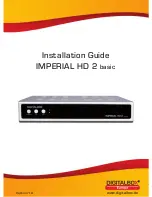
21
00
4/2 Extended format data is not combined
01
The panel sends: 1234 05
1234 05
0505 16
0505 16
The DRL2A will interpret this information as 1234 516
02
The panel sends: 1234 03
1234 03
3333 01
3333 01
The DRL2A will interpret this information as 1234 301
Note that a longer on-line time is required for this format
than for a standard 4/2 format. The default setting for Option
[51] is “00”; when programmed as “00”, the option is disabled.
[DEFAULT 00]
Option [52]: SK FSK RS232
The DRL2A provides two possible outputs to the computer.
Select 00 for protocol #1 or 01 for protocol #2. Please refer
to the section “Communication Protocol with Central Station
Computer” for more details.
[DEFAULT 00]
Option [53]: 4/1 Express Format
The Ademco 4/1 Express format may cause conflicts with
the Sur-Gard DTMF 4/3 with Checksum format or FBI Superfast
without checksum. Therefore, this option must be programmed
to inform the DRL2A which of the 3 formats may be used.
00
Sur-Gard DTMF 4/3 with checksum
01
Ademco 4/1 Express
02
FBI without checksum
[DEFAULT 00]
Option [54]: SESCOA Super Speed Format
(Only Available on 1.81SV version)
Program Option [54] as "01" to enable SESCOA Super Speed
format decoding and disable 4/2 with Checksum 40 baud
format decoding. When programmed as "00", the option
is disabled.
[DEFAULT 00]
Option [55]: Inter Digit time
Certain old dialers may have difficulties in communicating
with the receiver. The DRL2A provides a possible solution
by programming this option. This option should be left as
default and should be changed only on the recommandation
of a Sur-Gard technician.
00
1.25 seconds
01
1.50 seconds
02
1.80 seconds
[DEFAULT 02]
Option [56]: Group Arming / Disarming with User Code
Option [56] applies to the Sur-Gard DTMF 4/3 format.
When Option [56] is programmed as “01”, group arming/
disarming signals will be combined with the user code into
one signal which will be sent to the computer and the printer.
For example, the following information may be sent to the
computer: (The printer output does not change).
Printer:
1234-B01 CloseGrp
1234-416 Close
1234-C02 OpenGrp
1234-532 Open
Computer: 1234 C1 16 (instead of 1234 C 01 and 1234
C 16)
1234 O2 32 (instead of 1234 O 02 and 1234 O 32)
If a user code is not received after the group opening/
closing, the message “1234 C1 FF” will be sent; “FF” indicates
that a user code was not received.
[DEFAULT 00]
Option [57]: 4/3 Format User Conversion / 3-digit
Alarm Code
The Sur-Gard 4/3 DTMF format is made up of a 4-digit
account code, a 1-digit event code, and a 2-digit
hexadecimal zone code or user number. However, some
central station software packages use a common event
code and require decimal user codes.
Option [57] allows the user codes to be converted from
hexadecimal to decimal to meet the needs of the central
station software. Program Option [57] with one of the following:
00
Send the last two digits as user codes without
conversion
01
Convert the last 2-digit user codes to decimal as
shown here:
User Code receivedUser Code after conversion
00 to 99
00 to 99
B0 to B9
100 to 109
C0 to C9
110 to 119
D0 to D9
120 to 129
E0 to E9
130 to 139
F0 to F9
140 to 149
For example, if 1234 4B1 is received, 1234 C 101 will be
sent to the computer.
02
Send the last 3 digits as the zone codes with the
5th digit still used as the event code
For example, if 1234 161 is received, 1234 A 161
will be sent to the computer.
When individual event codes are used, if 1234
401 is received, 1234 C 01 will be transmitted to
the computer. When common event codes are
used, if 1234 401 is received, 1234 Z 401 will be
transmitted to the computer.
03
Send the last 3 digits as the zone codes and
convert the user codes only to decimal
NOTE:
When Option [56] Group Arming/Disarming with User
Code is programmed as “01”, the 3-digit user codes will be
combined with the group number as follows:
Code received
Code sent to computer and printer
1234B01
No transmission
12344B1
1234 C1 101
[DEFAULT 00]
Option [58]: Equivalent Line
Option [58] is used when an incoming signal can be received
on another receiver telephone line if the original line is
busy. Information printed and/or sent to computer will indicate
that the information was received on the same telephone
line. The receiver number does not change. Program 00 at
Option [58], or a number from 01 to 0E.
Examples:
Option [58] = 00; no equivalent line number
If receiver number is 02, and the line number is 3: the
printer message will be “L03-1234...” and the computer
message will be: 1
023
ssssss1234
















































